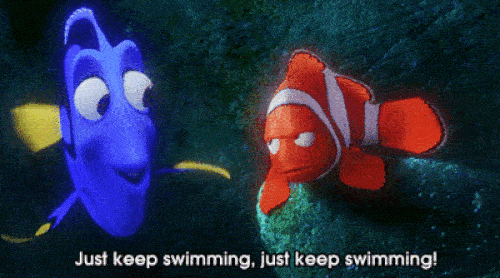Why Do You Need One?
1 of 8
If everyone else is doing it, you should too—at least in this case! It's critical to level the playing field in racing, and wearing a wetsuit is a distinct advantage over a traditional swimsuit or speed suit. There are a number of factors when choosing the perfect suit, including buoyancy, insulation and compression and speed.
Find:
Your Next TriathlonBuoyancy
2 of 8
The neoprene of wetsuits is quite buoyant, lifting you higher in the water and subsequently reducing drag. Entry-level suits tend to be a heavier 4 to 5mm neoprene throughout more of the suit, especially around the hips and backside to help keep the swimmer optimally lifted in the water. The buoyancy of swimming wetsuits will help keep your legs lifted as well, allowing for a more efficient kick and greater length from fingers to toes during freestyle. The float provided by the suit should feel like cheating, relative to how you feel when training in the pool.
Find:
Your Next TriathlonInsulation
3 of 8
To state the obvious, if a race is wetsuit legal, the water will likely be a bit chilly. For that thermodynamic reason alone, I always recommend a full-sleeve wetsuit to cover more of your body. A wetsuit acts as a layer of blubber, helping to keep your core body temperature up and your heart rate down. There's nothing worse than being cold during a swim and not being able to do anything about it. Your mind will fixate on being cold and distract you from maintaining good mechanics and sticking to your race plan.
Find:
Your Next TriathlonCompression and Speed
4 of 8
The repetitive overhead movements of the catch and pull in freestyle make your shoulders vulnerable to injury. With the proper paneling and design, the neoprene actually helps stabilize and support your shoulder (and the rest of your body for that matter) throughout the entire range of motion of your stroke. Many wetsuits are even built with an arms-up design to help maximize the length of your stroke without restriction. Compressions through your core and torso helps transfer power effectively and maintain proper posture in the water. Also, the hydrodynamic profile of swimming wetsuits directly equates to speed—up to 10 percent faster in fact.
Find:
Your Next TriathlonHow to Select the Right Suit
5 of 8
What was once a distinct niche, wetsuit brands now have hundreds of options. Swimming wetsuits are requisite for triathlon and each brand continues to up the ante and improve design and efficiency. Selecting the right suit for you is certainly subjective, but there are a few guidelines to help ensure you buy in to the best suit for you.
Find:
Your Next TriathlonLike a Glove
6 of 8
It's anything but intuitive deciphering if a wetsuit fits you properly. It's safe to assume (and mentally prepare) that a well-fit suit will feel tighter than you want it to... At first. Knowing neoprene tends to open up in water and after a handful of uses, it's recommended to choose a suit that fits you very snugly. Excess room in your crotch and armpits are signs of a suit being too big. It should literally fit like a glove, with little extra room. There should be no bunching in the armpits, chest or around the waist. It's always OK to have a few extra inches on the wrists and ankles that the wetsuit doesn't cover if that means the suit fits snug elsewhere. Needing help to zip up your suit is a sign of a good fit.
The high collar design of most wetsuits is functional in limiting the amount of water it lets in but often is the first complaint newbies have when trying to get used to a new suit. When trying on different wetsuits, be sure you have some breathing room (literally) and don't feel too much pressure on the front of your neck, which is potentially indicative of a suit being too small for you. Raise your arms over your head to feel out the suit's mobility through the shoulders. You should be able to fully extend your arms overhead without the restrictive feeling of your arm being pulled downward. Maximizing the length of your stroke is imperative in reaching your full power potential.
Find:
Your Next TriathlonThis One or That One?
7 of 8
Now that you have a better handle on the function of a wetsuit and what to expect in wearing one, let's flesh out the finer points of which specific suit will be optimal for you.
Quality is key! Pro tip: Turn the wetsuit inside out so that you can see the paneling and design. Generally, with a higher number of panels, the maker is able to engineer a suit that moves specifically with the mechanics of freestyle in mind, maximizing freedom at the catch phase, yielding greater power. Similar to having a dress suit tailored, a wetsuit with many specific panels in the design will allow for greater range of motion and swim-specificity.
Suits can range from $100 to $1000—a hefty spread—but you truly do get what you pay for. It's rare for a triathlete to do one race and hang up their wetsuit for good. With this said, steer away from the bargain $100 wetsuit that will only leaving you wanting more. In a few months, you'll be buying a better wetsuit to replace your frugal purchase. Each wetsuit maker typically has entry level, mid-level and high-level options. For most age-groupers, a mid-level suit will provide long-term quality at a reasonable price point. The high-end suits certainly can offer a bit more in terms of performance, but the subtle upgrade is merely personal preference at this point. The bottom line? Invest in a tried and true suit that will hold up and provide the support you need for your swims.
Find:
Your Next TriathlonAbout the Author








Discuss This Article